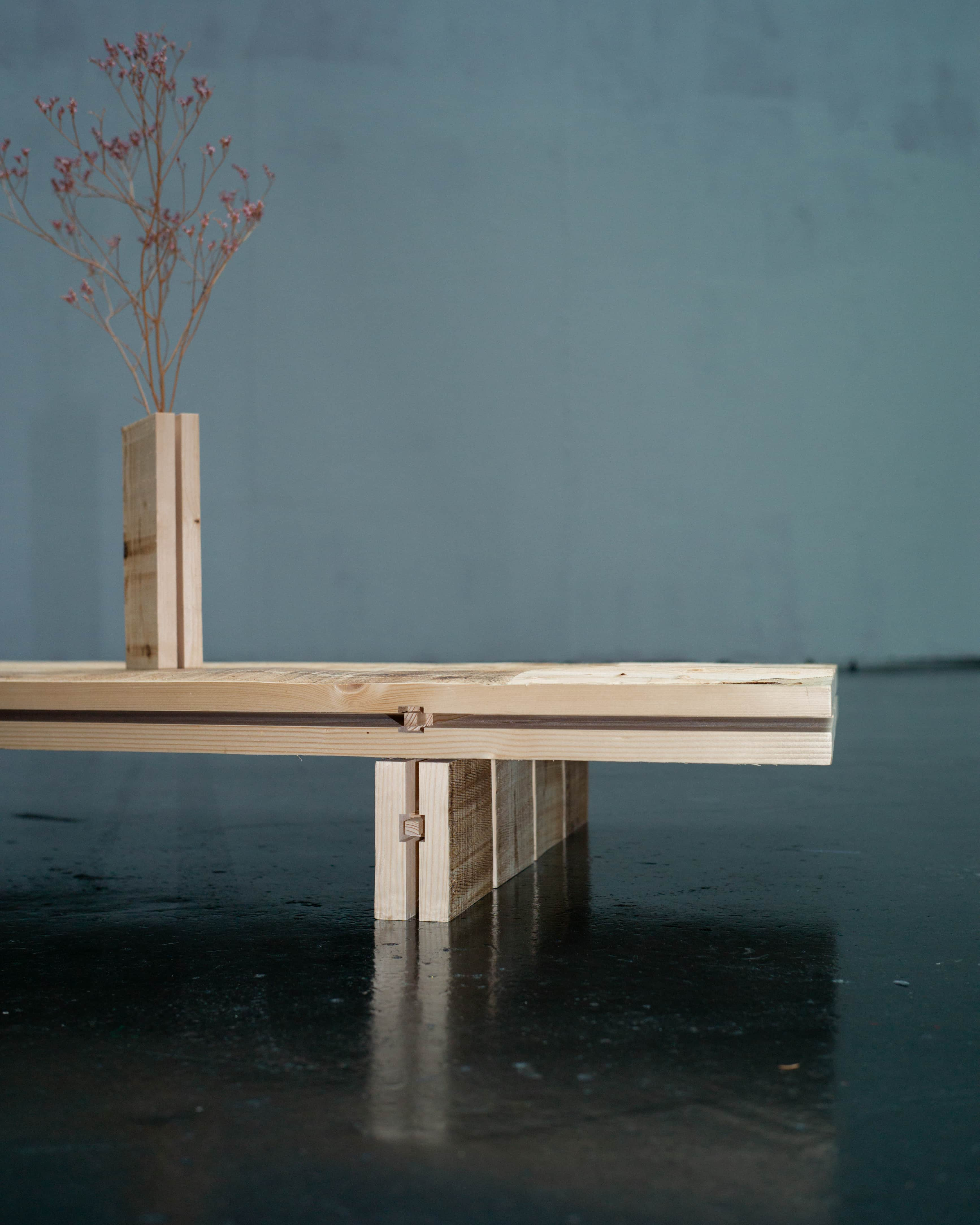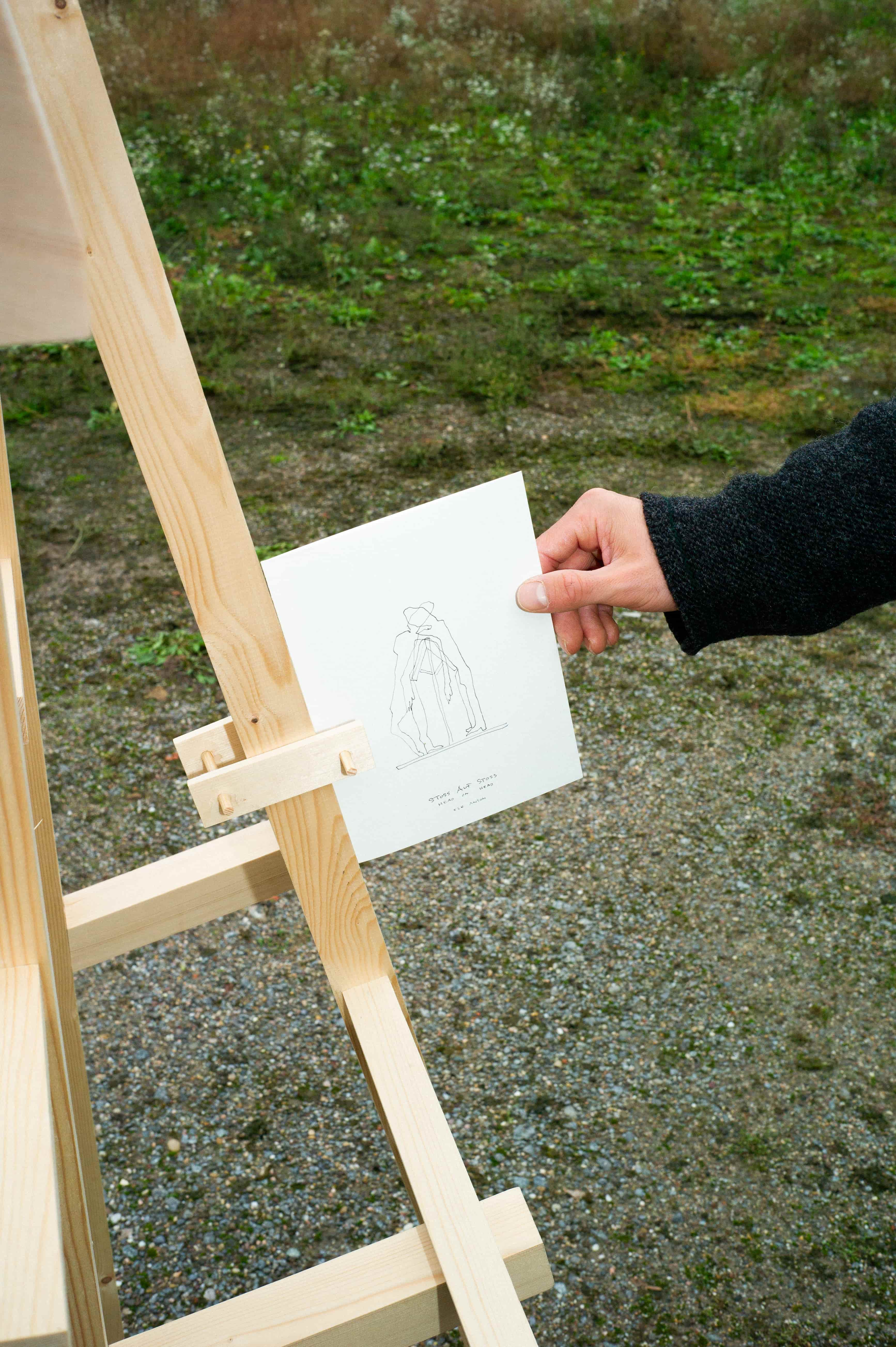FOR GIVING
06 – 2025ABOUT
Standing years became lying years.
After my father's death, I inherited not only a sense of grief, but also the carpentry skills anchored in my body. Yet I did not want to transfer the weight of the material and the responsibility resting on my shoulders into my hands.
This project marks a return to wood — but not as a continuation of my father’s craft. It is an attempt to develop a new language with the material, one that allows me to process and move beyond the inherited wound. Using the technical language of carpentry, I rewrite my family’s grief, translating terms such as shadow gap, head on head, or forgiving into techniques that take shape as objects.
Each object creates a structure of support that facilitates a specific kind of mourning — for me, for my siblings, for us as a family. The collection consists of three objects, three vases, and three cards. Each work emerged from conversations about our different ways of mourning: visible, hidden, shared, withdrawn.
On a societal level, the project understands grief not as a private act, but as a collective task — an architecture of support that becomes particularly relevant in times of loss of control, uncertainty, and fragility.
Structures of Support creates situations carried by gestures — of giving, of holding, of letting go.
After my father's death, I inherited not only a sense of grief, but also the carpentry skills anchored in my body. Yet I did not want to transfer the weight of the material and the responsibility resting on my shoulders into my hands.
This project marks a return to wood — but not as a continuation of my father’s craft. It is an attempt to develop a new language with the material, one that allows me to process and move beyond the inherited wound. Using the technical language of carpentry, I rewrite my family’s grief, translating terms such as shadow gap, head on head, or forgiving into techniques that take shape as objects.
Each object creates a structure of support that facilitates a specific kind of mourning — for me, for my siblings, for us as a family. The collection consists of three objects, three vases, and three cards. Each work emerged from conversations about our different ways of mourning: visible, hidden, shared, withdrawn.
On a societal level, the project understands grief not as a private act, but as a collective task — an architecture of support that becomes particularly relevant in times of loss of control, uncertainty, and fragility.
Structures of Support creates situations carried by gestures — of giving, of holding, of letting go.

 Laurin – Forgiving
Laurin – ForgivingForgiveness is crucial in this object. The use of a shadow gap and the burning that occurred when cutting the planed planks created room for inaccuracy – the wood forgives.
The technique resulted in a low table that serves as a headrest, enabling collective or individual silence and rest.





Lucia – Load capacity
My sister was very young when our father died.
She often had to retreat into herself with her grief because she lacked external support.
A solid bench made of glued planks created for her, with many contact points emphasising adhesion and durability. The seat is slightly inclined so that two bodies have to mould themselves together and hold each other.
My sister was very young when our father died.
She often had to retreat into herself with her grief because she lacked external support.
A solid bench made of glued planks created for her, with many contact points emphasising adhesion and durability. The seat is slightly inclined so that two bodies have to mould themselves together and hold each other.
Anton – Head on Head
My brother mourns head-on, directly, without any detours. For him, the object is a standing support
on which two people position themselves opposite each other.
A head-on-head joint at shoulder height, supported by a straight-lined construction, absorbs the weight of the confrontational encounter.
My brother mourns head-on, directly, without any detours. For him, the object is a standing support
on which two people position themselves opposite each other.
A head-on-head joint at shoulder height, supported by a straight-lined construction, absorbs the weight of the confrontational encounter.



